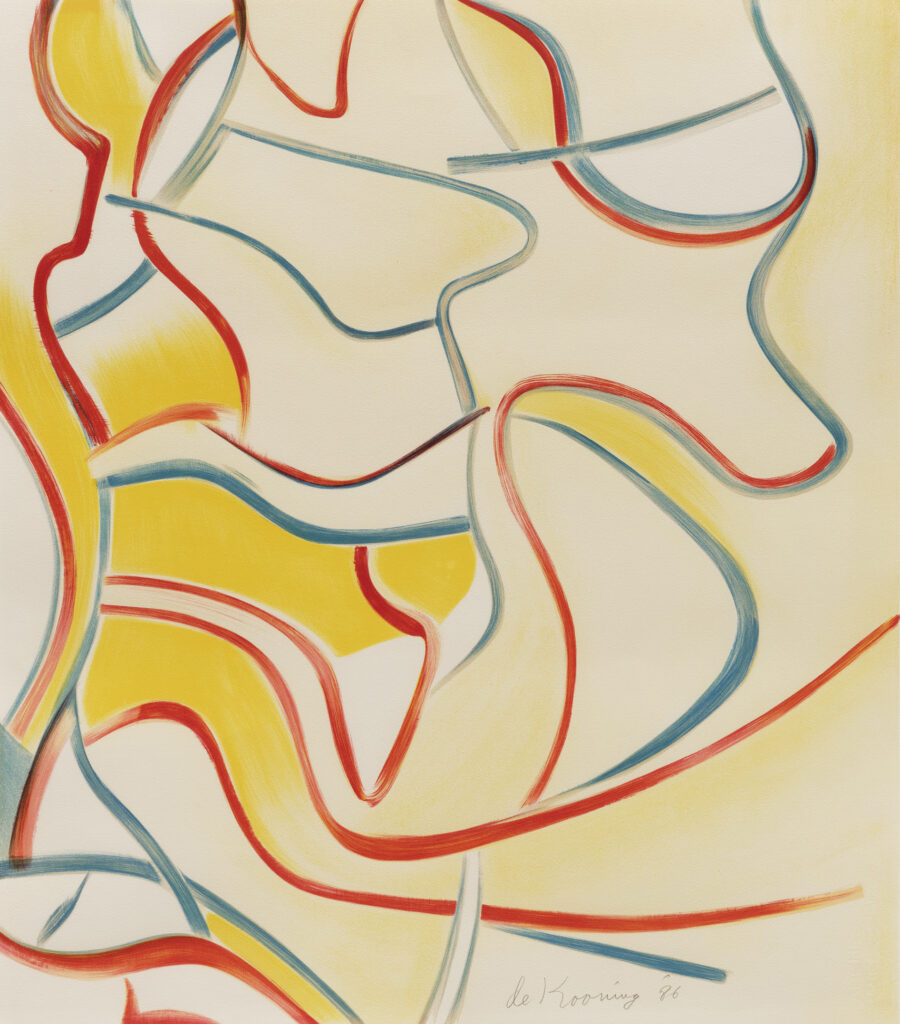
As Willem de Kooning’s visual language transformed during the 1980s, the raw and gestural marks which typified his iconic contributions to Abstract Expressionism metamorphosed into more vacuous, organicist forms delineated by undulating lines of brilliant color. As the final chapter in the artist’s sixty-year career, this body of work represented de Kooning’s mature probing of the essence of color and form.
Untitled (from the Quatre Lithographies series) is a vivid representation of the virtuosity and ebullience that characterized the artist’s late style. A single plate from a suite of four related lithographs de Kooning executed in 1986, this image epitomizes the sublime fluidity of line that de Kooning achieved in both painting and lithography. The sinuous ribbons of bold primary colors, which gracefully unravel across the composition, translate the vigor of his earlier work into a joyous lyricism.
Though de Kooning experimented with printmaking as early as 1943, it was on a visit to California in 1960 that he made his first lithograph. The artist periodically returned to the medium throughout his career, especially at critical junctures in his corpus—such as in the 1980s. “Lithography allowed de Kooning to integrate the spontaneity of the Abstract Expressionist gesture with the technical process of printmaking,” the art historian Jennifer Field illuminated. “The use of tusche—a greasy medium that is applied to the lithographic stone with a brush or pen—can resemble the act of painting.” In this sense, the relationship between painting and printmaking was reciprocal; de Kooning’s utilization of the fluidity of tusche in some of his lithography was analogical to the artist’s gestural employment of oil paint, and the two media came to mutually inform each other.
Courtesy of Susan Sheehan Gallery, New York.
